Antec DF-85 and Corsair 600T Cases Review

Today we are going to talk about two new system cases from Antec and Corsair. They have one interesting feature in common: they are the first system cases with a USB 3.0 port on the front panel. Read more in our review!
Compared to other computer components, a system case is a highly conservative product. Mainboards, hard disks and processors all call for an upgrade once every two or three years if you want to keep your computer up to date. And replacing a processor with a faster one often requires that you replace your mainboard, too. As opposed to that, a system case can survive not one or two but many upgrades. That’s why many people prefer purchasing as good a computer case as they can afford because it is going to serve not one or two years, like a graphics card, but much longer.
That’s quite okay with the manufacturers who don’t have to bother about updating their model range constantly. If a good system case gets popular, it can sell successfully for a long time. On the other hand, they must promote the demand somehow and entice customers into replacing their current system cases with newer and better ones, just like it goes with other computer components.
Alas, new system cases are often but versions of older ones with a redesigned front panel. More serious innovations provoked by changes in design trends can be observed no sooner than once in a few years. Transitioning to larger fans, moving the power supply into the bottom part of the chassis, providing a special compartment to hide cables in are the kinds of innovations that have been very slow to arrive. Their introduction often coincided with a debut of a completely new product series.
It’s somewhat different with the front-panel connectors. On one hand, they are often implemented as a separate unit and can be easily replaced. On the other hand, most manufacturers don’t bother about adding anything to the standard selection of two audio connectors, two USB 2.0 ports and one FireWire. The eSATA interface is not new but has only recently ceased to be a unique feature of expensive system cases. And now that the manufacturers have got accustomed to eSATA, there is another new interface to be implemented, USB 3.0 (you can read more about it in our earlier review). Of course, it is backward-compatible with USB 2.0 and even has a same-size connector, but has more signal lines, so the connector is different anyway. Another problem is that this interface is not often implemented on mainboards as an onboard header. USB 3.0 connectors can usually be found at the mainboard’s back panel so far.
Notwithstanding these difficulties, some manufacturers have already offered new system cases with USB 3.0 ports. Let’s have a look at them, especially as these models would be interesting even without their USB 3.0.
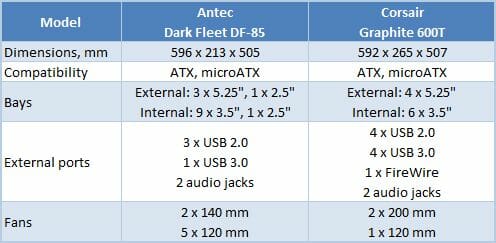
Antec Dark Fleet DF-85
We are always glad to test an Antec system case as this company has regularly pleased us with very good products. This time around, it is the flagship model of the new Dark Fleet gaming series.
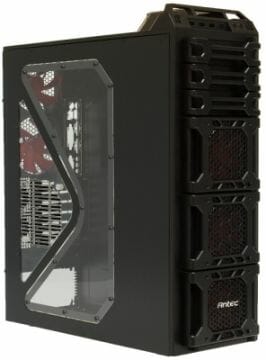
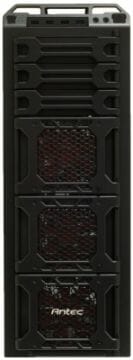
As becomes a flagship, the DF-85 is large. It is a real Big Tower. Although lacking the gloss of the Performance and the practicality of the Hundred series, this model attracts the eye. Its intricate and irregular front panel with the excrescence at the top provokes associations with ships or rather with spaceships. It seems to come from those sci-fi books where a pompous fleet of huge spaceships travels the entire galaxy to destroy a dozen or two of planets. So, the visual effect of the DF-85 is most impressive.
Take note of the windowed side panel. This model is going to be appreciated by people who like to look at their computer components (or to show them to others).
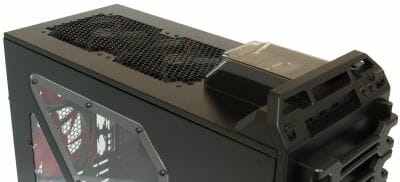
Let’s examine the top panel first. Here, in front of the two 140mm fans covered with punched-out grids, we can see the ship’s queerly shaped superstructure.
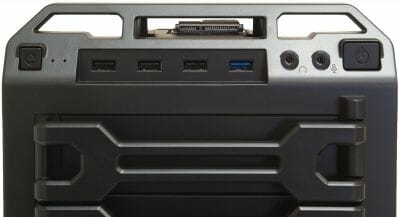
It is there that the system case’s buttons and connectors reside. The Power and Reset buttons are placed at the opposite sides, so you can’t confuse them. They are half-sunken into the slanting plastic surface, which provides some additional protection against an accidental press.
The front-panel connectors are in between the buttons. A pair of audio connectors is complemented with as many as three USB 2.0 ports. There is also a USB 3.0 port which can be easily identified by its blue color. There is another connector above but we’ll discuss it later. We can only add that this system case lacks eSATA, which is a downside.
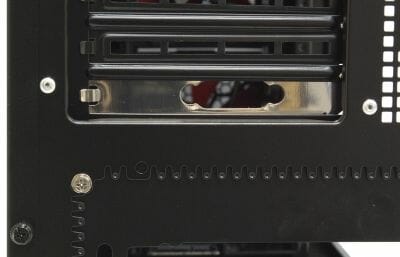
As we’ve written above, today’s mainboards don’t come with onboard USB 3.0 headers, so the manufacturer of this system case had to recall one old trick. The cable from the front-panel connector goes along the entire chassis and then outside through the special back-panel bracket with a hole. Then this cable is just plugged into the mainboard’s back-panel USB port. Although lacking in elegance, this solution is the simplest possible. The only thing we don’t quite understand is why that bracket is so bright and shiny while the system case is black overall.
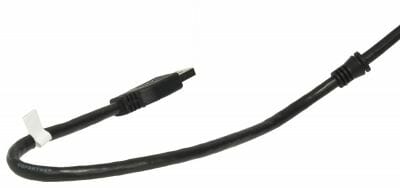
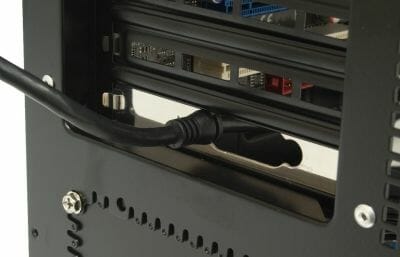
The USB 3.0 cable is thick in one spot so that you could fix it within the bracket. As a result, the cable doesn’t hang loosely inside, and its “tail” behind the back panel looks more or less neat.
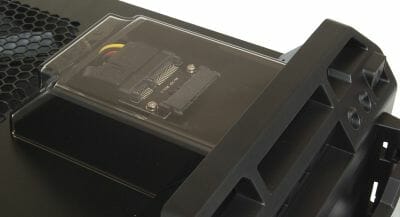
The remaining connector on the top panel can be easily identified as soon as you take a look at it from above through the transparent plastic. It is a couple of SATA connectors (interface and power) that are placed outside the system case so that you could attach a 2.5-inch hard disk drive to them. This is a very odd solution, we must confess. Thick hard drives (12.5 rather than 9.5 mm) cannot be plugged in at all because the plastic frame at the front gets in the way. And when you do manage plug an HDD in, it will stick out precariously. You can tear off the connector by accidentally pushing the connected HDD. Furthermore, the purpose of this arrangement is unclear because most users prefer to install 2.5-inch drives into external enclosures that convert the drive’s native SATA into USB interface.
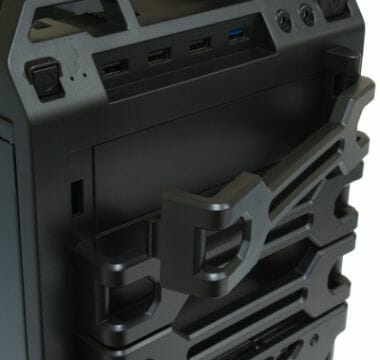
Let’s get back to the front panel, though. Besides the superstructure, its appearance is determined by the plastic brackets covering the 5.25-inch bays. Although they look original, it is not handy that you have to push them aside each time you need to access your optical drive. Users who install manual fan controllers and other such devices into 5.25-inch bays won’t like that, either.
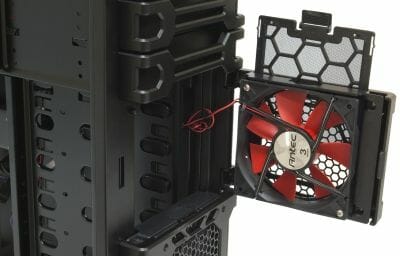
There are only three 5.25-inch bays in this system case, though. Most of the front panel is occupied by three doors which provide access to the HDD bays. Perhaps some users will miss more 5.25-inch bays, but we guess the configuration of the DF-85 is more adequate for today’s applications. There is a dust filter in front of the fan on each door. You can easily take the filters off for cleaning.
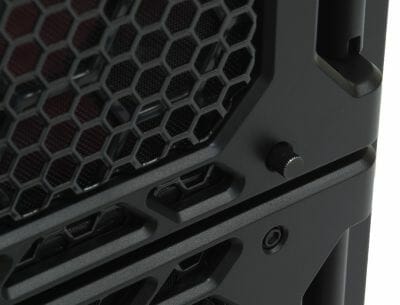
The speed of the front fans can be adjusted by means of the small control in the bottom right of each door.
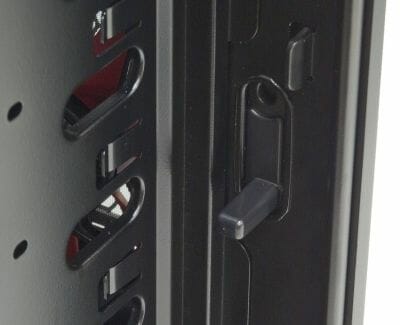
By the way, the doors are not so easy to open. There is a common guide inside the plastic front panel. It is shared by the three doors and its position is changed by means of a small lever inside the chassis. When the guide is closed, you can’t open the doors without damaging them.
Frankly speaking, it is unclear why the manufacturer provides quick access to HDDs from the front if you still have to open the side panel to access the lever and open the doors. You can leave the guide open all the time, but that’s not enough because HDDs are fastened in the bays by means of thumbscrews.
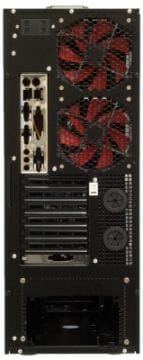
The back panel is rather ordinary. The PSU bay is at the bottom, and the power supply is fastened to a detachable frame that is compatible with Antec’s exclusive CPX format. We can also see two openings for the pipes of a liquid cooling system and two 120mm fans here.
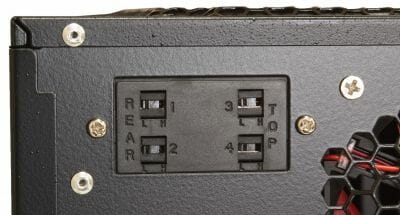
You can find four tiny 2-way switches in the top left of the back panel. You will easily guess their purpose if you have ever dealt with modern top-end system cases from Antec. These switches set the speed mode of the system fans. Take note that each switch has only two positions. The manufacturer has abandoned three-way speed management, so the TriCool fan series is now replaced with TwoCool fans.
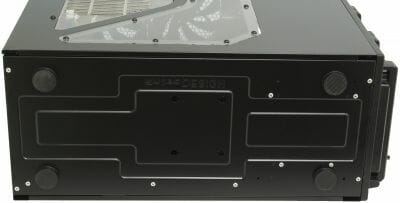
The feet are very simple. They are four rubber cylinders placed at the corners of the bottom panel.
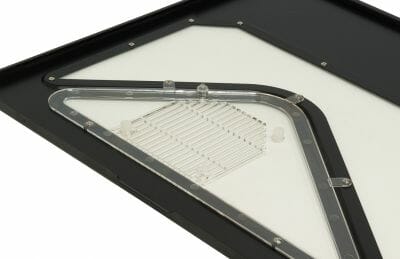
Removing the side panel, you can have a look at the translucent plastic with a fan seat. It is designed for 120mm fans. Interestingly, two poles of the fan seat are made from the same translucent plastic while the other two are made from soft silicone which is usually used for vibration-absorbing pads for HDDs. This solution is meant to reduce vibrations and noise.
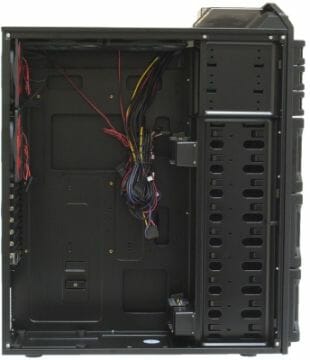
As you can expect from such a huge chassis, there is a lot of free space inside. The quality is high, the steel is 0.8 millimeters thick, and there is no chance you can cut your fingers when assembling your computer in this system case.
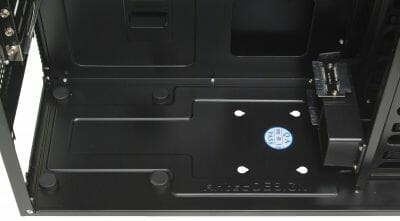
It is simple to install a power supply here. You just put it down on the four rubber poles and screw it to the back panel. Take note that a PSU with a horizontal fan can only be installed with the fan up. There are no vent holes in the bottom of the case.
There are four holes in the center of the bottom panel. Judging by the distance between the holes, a 2.5-inch HDD (or an SSD) is supposed to be installed there. You shouldn’t use that place for a drive you plan to take off frequently because you have to turn the whole system case upside down to unfasten the screws.
By the way, if you do install an HDD on the bottom panel, your choice of PSUs will be limited to models with a length of 21 centimeters or shorter.
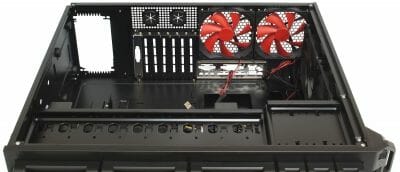
The back-panel brackets are meshed and fastened with thumbscrews. That’s handy but you have to use a screwdriver for the first time anyway because the thumbscrews are very tightly fastened at the factory to prevent them from getting lost during transportation.
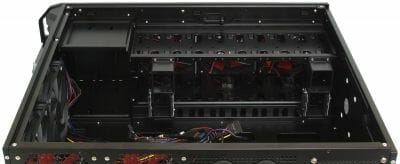
As we’ve said above, the front rack is solid, without individual baskets. Its larger section contains 3.5-inch bays. The smaller section consists of only three 5.25-inch bays.
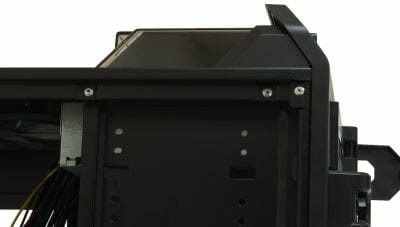
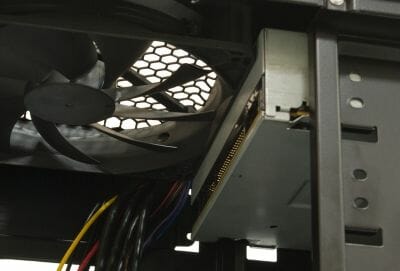
Trying to install our optical drive into the top bay, we faced an unusual problem. The back of the drive pressed against the fan while its front panel was still sticking out by about 5 millimeters although our drive is not very large, only 180 millimeters. We hadn’t expected to feel a lack of space in this system case, really. Of course, you can install your drive into a lower bay or buy a shorter model (most of today’s optical drives are 170 millimeters long), yet that was quite an unpleasant surprise.
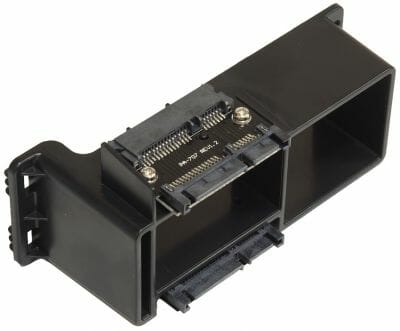
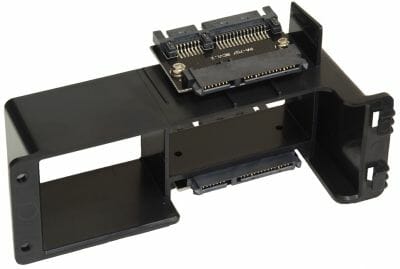
The DF-85 can accommodate nine HDDs. You can enable hot swapping for four of them if you use the included mechanisms which are fastened to the back of the HDD bays. That’s a cheap, simple and rather handy solution, but it prevents you from securing your HDDs with screws.
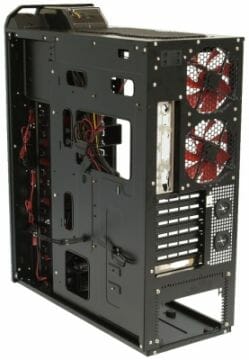
The DF-85 offers a really handy way of hiding cables out of sight. There are a lot of openings leading to the hidden compartment and you will find cable ties in there. Most importantly, the compartment is large, about 2 centimeters wide, so you won’t have problems laying even thick cables in there. The thickest bunches of cables can be tucked away behind the drive bays. There is a generous amount of free space there.
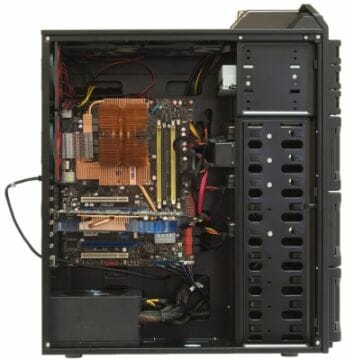
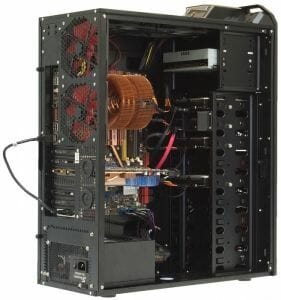
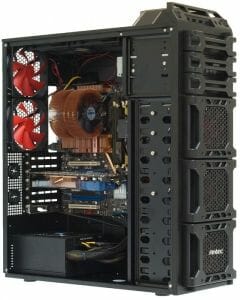
When we were assembling our test configuration in this system case, we realized that it was not very long, actually. The distance from the back panel to the drive bays is 312 millimeters, but the sticking-out drives leave only 300 millimeters for the graphics card, and you may want to have some 15 millimeters more for the HDD connectors. If you use the hot-swap adapters, the expansion cards will only have 265 millimeters to settle in.
You get a lot of space for your CPU cooler, though. Instead of a standard 170 millimeters, this system case can accommodate CPU coolers as tall as 180 millimeters. And if you decide to install the radiator of a liquid cooling system above the mainboard by fastening it to the top panel, you will have as many as 75 millimeters, not counting in the 25 millimeters occupied by the system fans. The only thing you have to remember is that the fan seats here only support 140mm fans standing next to each other (a radiator for two 120mm fans can be fastened outside, on the back panel of the system case, though).
Another thing you should take into account is that an extension cord for the 12V CPU power connector is not included into the box. So, if your power supply has a short CPU cable, you may have to stretch it out along the shortest route, i.e. inside the chassis, rather than behind the mainboard’s mounting plate.
The interior of the assembled DF-85 is neat and has a lot of free space. This system case is obviously designed for more advanced configurations than ours.
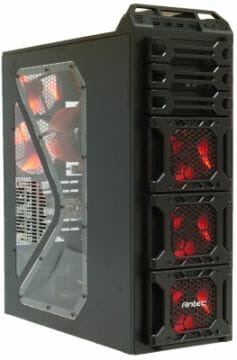
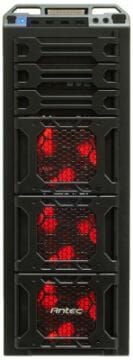
The fan highlighting is red and matches the overall exterior design perfectly. It can only be turned off by replacing the fans, but we guess most users are going to like it.
Corsair Graphite 600T
The second product to be discussed in this review comes from the renowned Corsair. We already know the huge Obsidian and now it’s time to take a look at the new Graphite series.
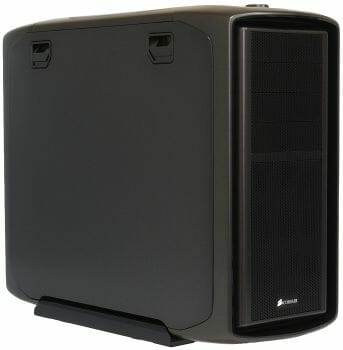
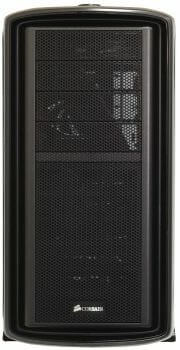
The Corsair 600T is different from the DF-85 as well as from many other system cases because it is long, not very tall and very broad. It’s kind of podgy. To be exact, the 600T is about 5 centimeters wider than ordinary models with their width of 210 millimeters. This is its main distinguishing feature, actually, because otherwise there is nothing extraordinary about its exterior design. It is a nice-looking box with rounded-off edges and a meshed front panel.
The side panels are blank and have no windows or vents. They are fastened with two handles rather than with screws.
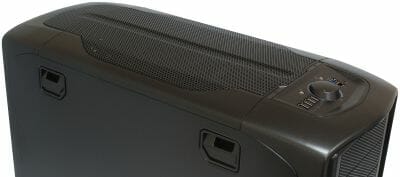
The top panel is covered with a mesh, too. In its front part we can see all the controls and I/O connectors.
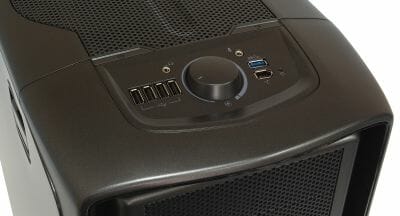
The connectors are placed around the large knob of a fan speed controller. To the left of it, and close to each other, there are as many as four USB 2.0 ports. One USB 3.0 and one FireWire are on the right. Two audio connectors are above. We guess an eSATA connector below the controller knob would make this an ideal picture.
The Power and Reset buttons are not so easy to find. They are placed near the mesh and have the color of the surrounding surface. The buttons have a short travel distance, which may be a problem. There is a high chance of an accidental press if something falls down on the system case.
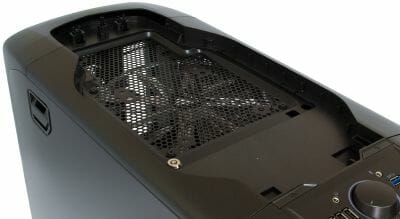
You can take the mesh off by pressing down on its rear part. Below you can see a large compartment with yet another mesh and a lock of the left side panel. The second mesh allows to install two 120mm fans. It looks like an invitation to put the radiator of a liquid cooling system here, but it can hardly fit below the exterior mesh. The system case won’t look so good without the latter. There is a 200mm fan installed here by default.
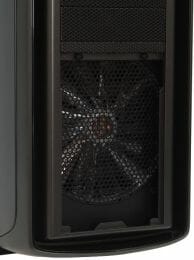
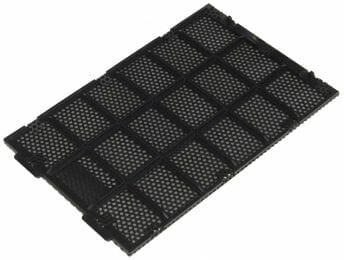
There is another such fan behind the removable mesh on the front panel. It is sunken into the chassis for some reason. As opposed to the top mesh, this one is fine and helps protect the fan against dust.
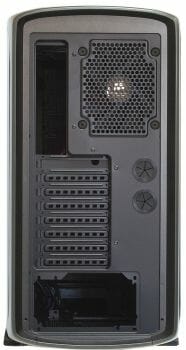
The back panel is ordinary enough. The Graphite 600T has a bottom PSU bay (the PSU can be oriented in either of two ways, as has become typical of top-end system cases). There are two rubberized openings for the pipes of a liquid cooling system next to the expansion slots. In the top part of the panel we can see a 120mm fan.
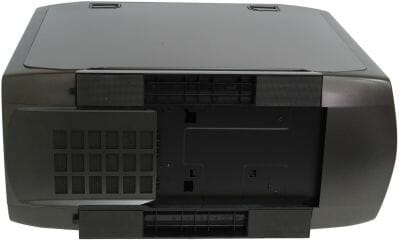
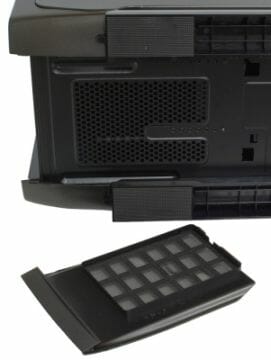
The bottom panel impresses with its unusually designed supports. The feet of this system cases stretch along its edges and seamlessly transition into the plastic panels of its exterior. The feet are large. Their vibration-absorbing pads are about twice as large as those of competitor products.
In between the rear feet there is a vent opening for a power supply with a horizontally positioned fan. The vent has a dust filter which can be easily removed by pulling it backwards. You won’t have to turn the whole system case upside down for that.
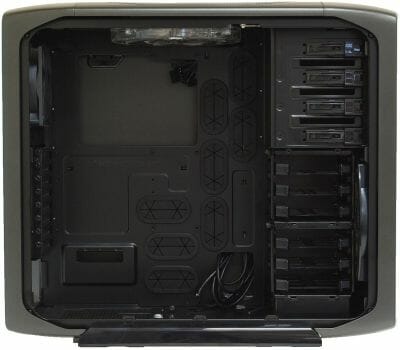
Despite its rather thin steel, only 0.6 millimeters, we have no doubts about the rigidity of this chassis. The quality is expectedly high. Every edge is properly finished. The openings leading to the hidden compartment for cables have rubber covers.
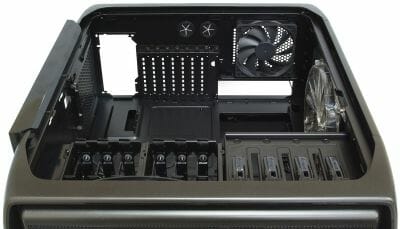
The expansion-slot brackets are reusable and fastened with thumbscrews as is typical of top-end system cases. The eighth bracket differs from the others: it has a cutout for the USB cable to connect the front-panel USB 3.0 port to the mainboard’s back-panel connector.
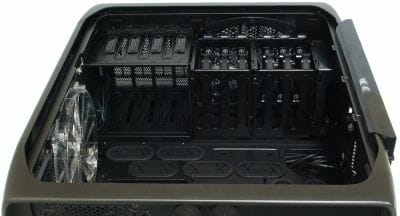
5.25-inch devices are fastened with a screw-less mechanism. The device is pressed against the bay on one side, and a plastic lock with a couple of prongs is used to fix it in place on the other side.
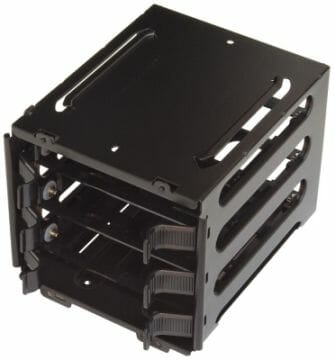
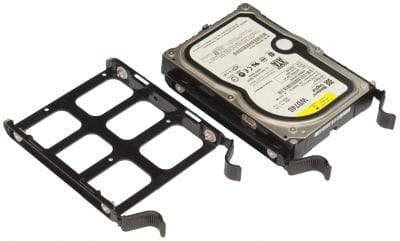
HDDs glide into their basket along flexible plastic guides. You put a guide on your HDD, aligning its prongs with the screw holes in the sides of the drive. The guide holds within the basket due to the force of friction and small protrusions. This may be not enough if you are going to carry the assembled system case somewhere in your car.
There are two HDD baskets here, and you can place them one above the other or next to each other using the guide in the bottom panel. This solution ensures that you can install any, even very long, expansion cards into this system case, even though there is as many as 35 centimeters from the back panel to the HDD bays anyway.
We guess a third HDD basket would be a demanded option for users who need a lot of disk space.
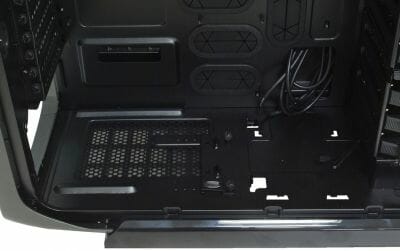
You can see the mentioned guide for the second HDD basket in the photo. Next to it, there is a mechanism fastened with two screws to the bottom panel of the case. This is a support for a power supply. You can move it along the chassis, choosing the necessary group of mounting holes. This mechanism supports PSUs with a length of 140 to 200 millimeters.
The bumps on that plate may get in the way if you’ve got a nonstandard power supply, but you can always take it off altogether.
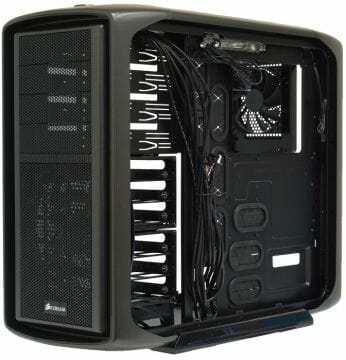
The hidden compartment for cables is as wide as 4 centimeters in the Graphite T600. You might even hide a second computer based on some Atom processor in there! As an example: the bunch of cables shown in the photo did not prevent us from closing the side panel at all.
The increased width affects the main interior of the system case, too. The Graphite T600 will easily accommodate a CPU cooler that will press against the side panel in other system cases. The cooler can be not 170 as usual but 200 millimeters tall!

This red warning leaflet included with the system case shouldn’t scare you. It just wants you to go directly to an authorized service center rather than to the shop you bought the system case in if you’ve got any problems with it.
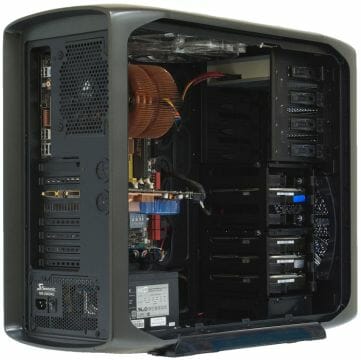
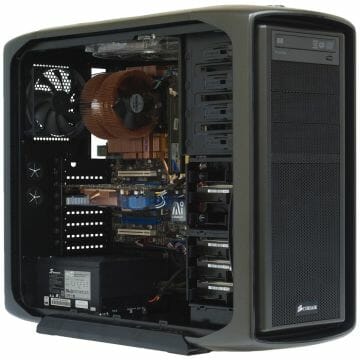
It was easy to assemble our configuration in this roomy system case.
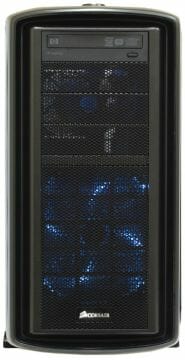
The highlighting of the fans is too dull.
Test Methods
We test assembled system cases at a constant ambient temperature of 23°C maintained by an air conditioner. As we assume that most users prefer low-noise computers, we set the speed of the CPU and system fans (those connected to the mainboard’s 3-pin connectors) into Silent mode (the quietest mode in the mainboard’s BIOS). If the system case has its own speed controller, we switch it to minimum speed, too. We do not change the default configuration of airflows determined by system case design.
The following components are installed into the system case:
- ASUS P5E mainboard
- Core 2 Duo E6850 processor
- Zalman CNPS9500 AT cooler
- Four hard disk drives Western Digital Raptor WD740GD
- HIS IceQ3 Radeon HD 3870 graphics card
- 2GB DDR2-800 SDRAM Patriot PDC24G6400LLK
- Microsoft Windows XP Professional SP2
- Seasonic M12D SS-850EM power supply (850 W)
The CPU temperature is read with the ASUS PC Probe utility included with the mainboard. The temperature of the HDDs is measured with HDD Thermometer. The graphics card’s temperature is reported by its control panel. The speed of the fans is measured with an optical tachometer Velleman DTO2234. There are the following test modes:
- Idle
- IOMeter (IOMeter’s Access Time test running on all the HDDs to load them fully)
- Prime95 (Prime95 running in In-Place Large FFTs mode to load both CPU cores fully)
- 3DMark06 (3DMark06 running at 1280×1024 with maximum graphics quality settings)
Every temperature is read after the system has worked for half an hour in the current test mode.
The following table shows the temperatures of the components if the system is assembled without an enclosure (“open testbed”).

The noise level is evaluated subjectively.
Test Results
First we are going to discuss the results of each system case individually and check out the temperature of HDDs depending on their position. We will also discuss the noise factor.
HDDs are numbered from top to bottom.
In the Antec DF-85 we installed the top three HDDs next to each other. They were separated from the bottom HDD with one empty bay.

The DF-85 ensures comfortable conditions for our components at the minimum speed of the fans. Well, we might have expected that from a system case with five 120mm and two 140mm fans!
The noise level is rather typical of Antec products in this category. The DF-85 is not silent, but should seem quiet enough for most users (except for the most demanding ones). The front fans produce more noise. To balance the airflows, the developers set the three intake fans at a higher speed than the four exhaust fans located at the top and back panels. For example, the back 120mm fans have a min speed of 900 RPM whereas the front ones, 1000 RPM. The 140mm fans have the lowest minimum speed, 800 RPM.

Increasing the speed of all system fans makes the computer rather noisy. The speed grows up to 1500 RPM for the rear fans, 1200 RPM for the top fans, and as high as 2000 RPM for the front ones. The temperature only improves by one or two degrees at that. Running the fans at such speeds may only be necessary for very top-end configurations or if the ambient temperature is very high.
In the Corsair 600T the top HDD was placed separately from the others.

Like its opponent, the Corsair 600T is quiet but not silent. The speed of the fans is not low enough for them to produce no noise: 600 RPM for a 200mm fan is quite a lot, especially as both such fans installed in the 600T are pumping the air through meshes.

The Corsair is better than its opponent at maximum speed. We mean in terms of noisiness rather than temperature. It is overall quieter and has a more agreeable spectrum of the noise. The 120mm back-panel fan was almost silent at 1050 RPM while the top 200mm fan was humming quietly at 750 RPM. The problem was with the front fan which was defective in our sample of the 600T and buzzed with its motor when rotating at maximum speed. That’s annoying because it is going to be not so easy to find a replacement for the 200mm giant.
Now let’s compare the two products with each other as well as with the open testbed.
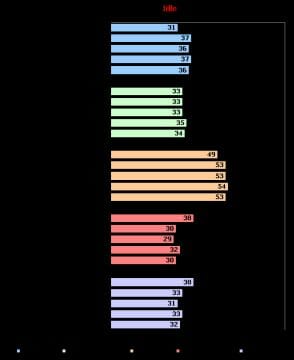
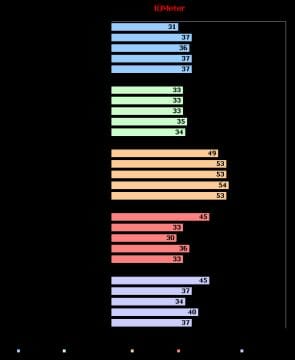
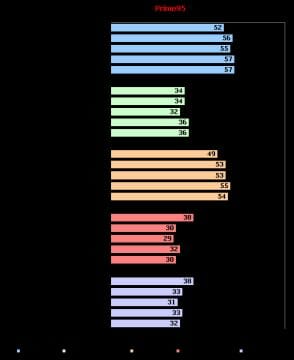
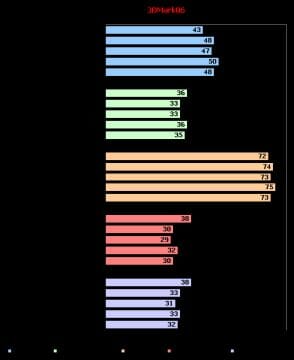
The system cases go neck and neck throughout our tests. The Antec DF-85 is somewhat better as our components were one or two degrees cooler in it, but we wouldn’t call that a big advantage. Overall, you will hardly need to set the speed of the fans above the minimum level with these system cases unless you’ve got a really top-end configuration.
Conclusion
We’ve said in the Introduction that system cases are conservative products and do not change frequently, but the products we have reviewed today do show some changes in design.
Those in the Antec Dark Fleet DF-85 are somewhat questionable. This is not a bad system case. It features an original exterior and allows to build anything from a top-end gaming station to a large-capacity file-server. Still, we had expected something better from it. Its inexpensive hot-swap feature is implemented poorly and the top 2.5-inch bay is not practical. Its cooling system is rather too noisy. So, the DF-85 might be an excellent system case, but it is only just good. Perhaps its low price is going to make up for the minor imperfections, especially as it is free from really serious defects.
The Corsair Graphite 600T leaves a highly positive impression. It is a pleasure to assemble a computer in such a roomy system case. It doesn’t offer anything new functionally, except for its increased width, but represents a good and time-tested design. You only have to take two things into account. The Graphite 600T is really wide and may not fit into some computer desks. And secondly, the cooling system of the 600T includes 200mm fans. Replacing such fans may be a problem.
Now, what about USB 3.0? This interface is too new and its implementation in system cases is rather awkward as yet. It is going to become far more popular in a couple of years and we will get rid of those cables going from the front to the back panel. But today, you have to put up with such provisional solutions if you really need USB 3.0 in your system case.